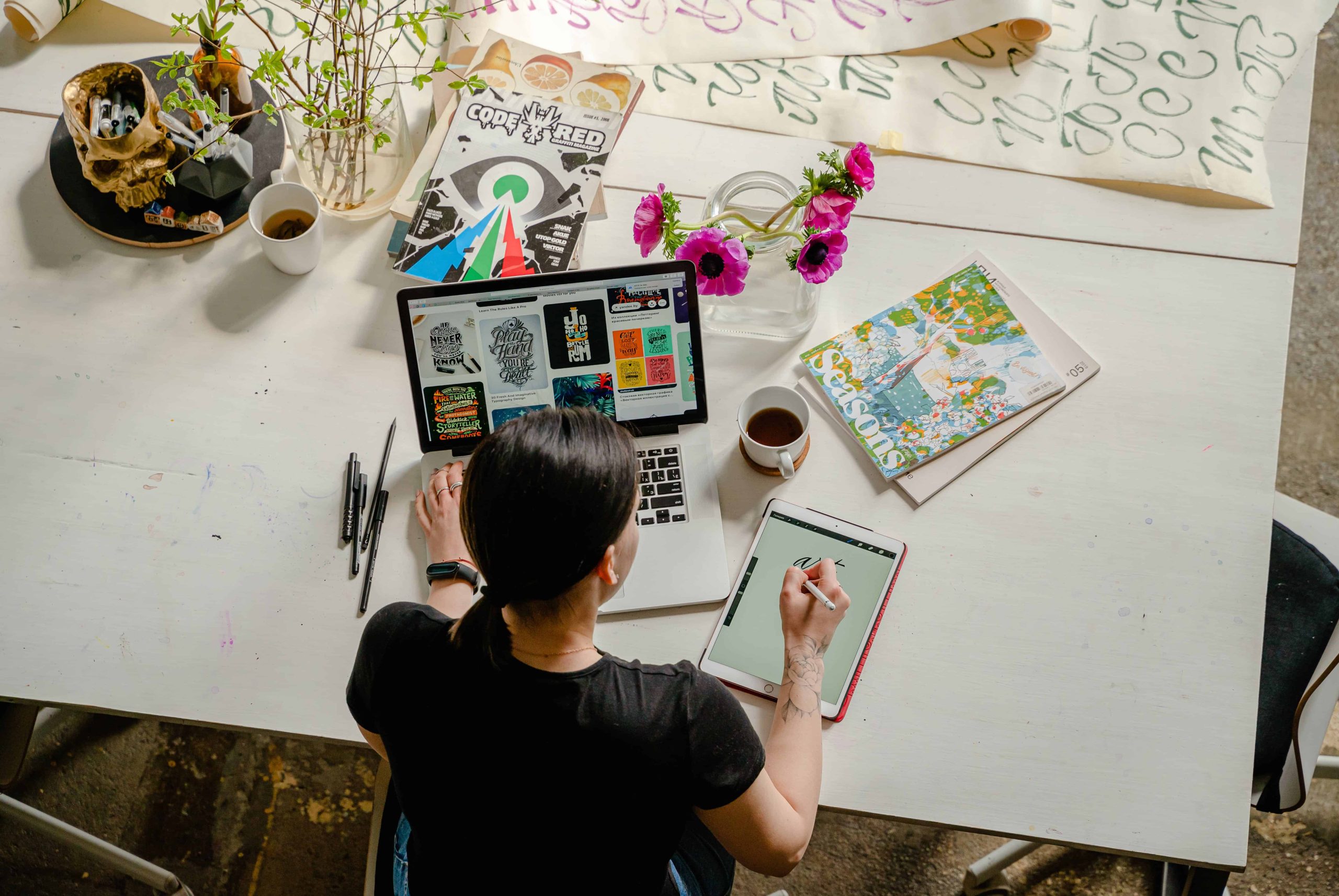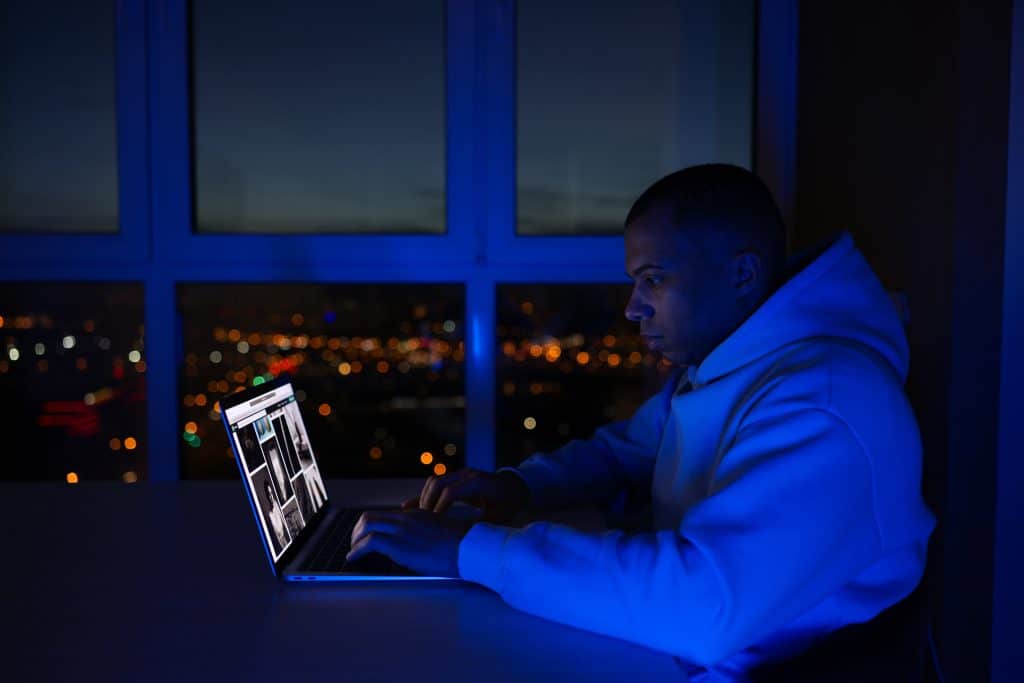
14 Jan Planning Your First Digital Art Exhibition in 2024
The rising popularity of digital exhibits is a reflection of how technology is changing the production and consumption of art. Despite providing a platform for established artists, these online galleries offer a unique opportunity for artistic expression and curation to novice artists, fans of digital art, and aspiring curators. The widespread availability of internet platforms makes art more accessible, allowing it to reach a wider audience and interact with like-minded individuals throughout the globe. To assist those who are ready to start this creative and inclusive journey in the field of digital art, this guide will help you through the complex process of organizing an exhibition of digital art.
Planning Your Art Exhibition

Photo by Pixabay
Concept and Theme:
- Unique and Compelling Ideas: Begin the planning process by generating creative and unique ideas for your digital art exhibition. Think outside the box to create an experience that stands out.
- Unifying Theme: Select a theme or narrative that ties your artworks together cohesively. Ensure that this theme aligns with your artistic vision while also appealing to the interests of your target audience.
- Tailoring to Platform and Audience: Customize your concept to suit the chosen digital platform and the preferences of your target audience. This customization ensures a seamless and engaging experience for viewers.
Curating Your Pieces
- Artistic Representation: The core of any exhibition lies in the selection of artworks. Choose digital pieces that not only reflect your unique artistic style but also contribute to a visually consistent and meaningful narrative.
- Consider Flow and Message: Pay attention to the arrangement and flow of the selected pieces to create a coherent storyline. Ensure that the artworks convey a message or evoke emotions that align with your exhibition’s theme.
- Meticulous Preparation: Prepare high-resolution files of your digital artworks to guarantee optimal online display quality. This meticulous approach enhances the overall visual experience for the audience.
Platform Selection
- Exploration of Options: Explore a variety of online platforms available for presenting digital art. This can include dedicated exhibition websites, art marketplaces, and social media channels.
- Comparison of Features: Compare the features offered by different platforms. Consider aspects such as ease of use, customization options, and the ability to showcase your digital art effectively.
- Technical Considerations: Be aware of technical limitations on each platform and ensure they align with the requirements of your digital artworks. Compatibility and technical aspects play a crucial role in the success of your exhibition.
- Target Audience Reach: Evaluate the potential reach of each platform and choose the one that aligns with your target audience. Opt for platforms that have a user base interested in digital art to maximize the impact of your exhibition.
Building Your Online Exhibition

Photo by olia danilevich
Site Design and Layout
Crafting a visually appealing and user-friendly interface is paramount in creating a successful online exhibition. The design should be aesthetically pleasing, reflecting the theme or concept of the artworks. The layout must optimize navigation, making it intuitive for visitors to explore the collection effortlessly. A well-structured exhibition enhances the overall viewing experience, ensuring that visitors can easily discover and appreciate the showcased artworks. Integrating artist information, detailed artwork descriptions, and contact details further enriches the viewer’s understanding, providing a comprehensive context for the digital art collection.
Interactive Elements
To elevate audience engagement, consider incorporating interactive elements into your online exhibition. Zoom functions allow visitors to explore intricate details of the artworks, offering a closer look at the finer aspects. Virtual tours provide a dynamic and immersive experience, enabling viewers to navigate through the exhibition as if they were physically present. Integrating audio and video components adds another layer of engagement, allowing artists to share insights, stories, or the creative process behind their works. These interactive features contribute to a more memorable and enriching exhibition experience, fostering a deeper connection between the audience and the art.
Marketing and Promotion
Creating a smart marketing plan is essential to your online exhibition’s success. Determine who your target market is and then adjust your marketing to successfully reach them. Use social media to spread the word about the event by posting eye-catching images and behind-the-scenes looks at the artwork. Participate in online art and digital exhibition communities to broaden your audience and establish connections with prospective visitors. Use press releases as another tool to get attention from the media and boost awareness. In the run-up to the show, producing interesting content—such as teaser trailers, artist interviews, or behind-the-scenes photos—helps create anticipation and increases interest and attendance. Maximizing the effect of your online art show requires deliberate and consistent marketing activities.
Opening Night and Beyond

Photo by VAZHNIK
Virtual Event Hosting of Art Exhibition
Organize a live premiere event to kick off your digital art show and foster a feeling of community. One way to personalize the display would be to have artists speak about the tales and inspirations behind their creations. Q&A sessions offer a forum for audience engagement, enabling participants to speak directly with artists and get further insight into the pieces on display. Moreover, think about adding carefully chosen music to the virtual event that enhances the mood of the artworks. In addition to enhancing the opening night experience, you can create the groundwork for a lively and involved community around your show by facilitating these interactive aspects.
Exhibition Maintenance and Engagement
Beyond the opening night, actively monitor comments and feedback from attendees to gauge their reactions and insights. Address questions promptly and encourage ongoing discussions to foster a sense of community. To maintain audience interest, regularly update and refresh the content throughout the exhibition duration. This could involve releasing additional behind-the-scenes content, artist interviews, or even new artworks. Utilize analytics tools to track engagement metrics, such as visitor numbers, time spent on the platform, and interactions. These insights will help you understand which aspects of the exhibition are resonating with the audience and guide your future content updates. By actively managing and engaging with your online community, you can ensure the continued success and impact of your digital art exhibition beyond the opening night.

Photo by Michael Burrows
Conclusion
A successful digital art exhibition necessitates meticulous planning, thoughtful curation, and effective promotion, offering artists a unique platform to showcase their creativity globally. Embracing the digital canvas allows for a visually appealing and immersive experience, with key steps ranging from defining the concept to hosting a virtual opening event. Marketing and promotion play pivotal roles in generating anticipation and attracting the target audience, ensuring the exhibition’s success.
As artists of all levels are welcomed in the digital art exhibition realm, the key lies in having a clear concept and passion for sharing one’s work. Whether choosing a single platform or a combination of websites and social media channels, the goal is to maximize reach and engagement. Beyond the opening night, actively engaging with the audience, monitoring feedback, and utilizing analytics tools contribute to sustaining interest and measuring the exhibition’s impact. In essence, the digital era offers unprecedented opportunities for artists to connect with a global audience, turning each exhibition into a journey through the evolving landscape of digital expression.
Key Takeaways
- Define the exhibition concept, theme, and target audience to guide the planning process.
- Choose an appropriate online platform and gather necessary tools for optimal presentation.
- Curate artworks carefully, ensuring they align with your artistic style and contribute to a cohesive narrative.
- Prepare high-resolution files for optimal online display and a visually consistent experience.
- Design the exhibition platform with a focus on a clean, user-friendly interface for an enhanced viewing experience.
- Utilize interactive elements like Zoom functions and virtual tours to elevate audience engagement.
- Develop a strategic marketing plan, leveraging social media, online communities, and press releases to generate anticipation.
- Host a virtual opening event to add a personal touch, fostering audience interaction and community building.
- Actively monitor comments and feedback post-opening night, addressing questions, and keeping content fresh.
FAQs
Do I need to be an experienced artist to host a digital art exhibition?
Not necessarily. Digital art exhibitions welcome artists of all levels. The key is to have a clear concept and a passion for showcasing your work.
Can I use multiple platforms for a single exhibition?
Yes, you can. Consider using a combination of dedicated websites, art marketplaces, and social media channels to maximize your reach and audience engagement.
How can I ensure a visually appealing art exhibition site?
Focus on a clean and user-friendly design. Use high-quality images, consistent branding, and organize your content logically for an optimal viewing experience.
Is it necessary to host a virtual opening event?
While not mandatory, a virtual opening event adds a personal touch, fostering audience interaction and building a sense of community around your exhibition.
Take a historical tour to discover key occasions when art acted as a bridge to promote mutual understanding and cross-cultural communication across various communities through Historical Perspectives on Art and Cultural Exchange guide.

